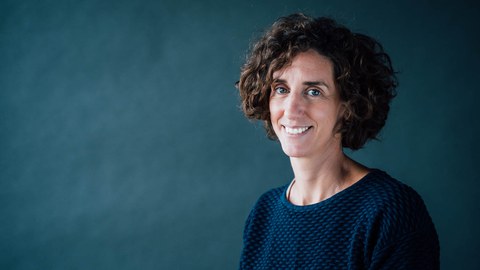Feb 11, 2021
#WomenInScience - Interview with B CUBE group leader Prof. Yael Politi

Prof. Yael Politi
The International Day of Women and Girls in Science is a day to celebrate the critical role of women and girls in science and technology. It is also a perfect occasion to feature Prof. Yael Politi, research group leader and deputy director at the B CUBE – Center for Molecular Bioengineering.
What is the Politi research group working on?
We study the arthropod cuticle as a model of biological materials. We want to understand how the structure of the material determines its properties, and how the organisms build the cuticle and control its form.
The exoskeleton of arthropod, the cuticle, has to serve both as a skin and a skeleton. It is multifunctional and carries a diverse set of tools and sensors. We are fascinated by this inherent multifunctionality. In order to achieve the multifunctionality, the material needs to be versatile in its properties. In biological materials this is typically achieved by variation in architecture – the same way folding a flat piece of paper can make it stiffer and allow it to bear higher load. This material versatility is indeed thought to be central to the evolution of the more than a million species that render Arthropoda the largest, most diverse animal group. It is also what makes the arthropod’s cuticle an especially attractive archetype for bio-inspired multifunctional material design.
Tell us more about your scientific journey. How did your career look so far?
I studied Life Sciences at the Tel Aviv University and then moved to the Weizmann Institute of Science for my Master’s and PhD studies. I joined the lab of Prof. Lia Addadi and Prof. Steve Weiner, leading researchers in the field of biomineralization. My fascination with biomineralization comes from my time working as a diver at the Red Sea before my studies. I wanted to understand how organisms build those fantastic coral reef structures. The lab of Lia and Steve was a perfect place for me to study these processes, and with their guidance I also learnt how to navigate a research project. I then moved to the Biomaterials department at the Max Planck Institute of Colloids and Interfaces for a postdoc position with Prof. Peter Fratzl, where I started working on chitin-based materials. I wanted to learn about the solutions organisms have found through evolution to build versatile materials from fully organic building blocks (without mineral). After two and half years of postdoc I started my group “chitin-based material tools and sensors” at that department. I am fortunate to have been working with supportive and inspiring mentors.
What was your dream occupation when you were still a child?
I wanted to be an archeologist.
Career in science can be tough at times. What motivates you?
It’s true but the overall balance is still that science is fun! I’m motivated by the drive to find answers and to solve little pieces of the puzzle. What keeps me going is the work with similarly motivated, engaged, and enthusiastic people. Especially in my group, but also in the broader sphere of colleagues and collaborators. I love our discussions and the everyday interactions in the lab. I like the excitement before an important experiment, looking together at new data, etc.
Science and family… What is your approach to managing it all?
Finding the balance is difficult and some periods are more challenging than others. I share the child care responsibilities equally with my partner although we each have our own careers that we care a lot about as well. Frankly, I’m able to accomplish less than I did before having a child. At first, it was hard for me to make peace with that, but today I’m fine with taking things a little slower. I don’t think the quality of my work is compromised.
What do you think, what is the biggest challenge for women in science nowadays?
I don’t think there is only one big challenge for women in science. I think there are multiple places where women are disadvantaged and different women will be affected by them differently. The culture of science was established when women were significantly underrepresented and it is strongly affected, as many other places in society, by stereotypic gender roles and unconscious biases. Bullying and sexual harassment occur more often that you think and victims are reluctant to come forward fearing the consequences. I think it is important to remember that, since this also means that there is not the one solution. We need to put in place measures on multiple fronts, and to strive for a systematic cultural change in science in order to achieve equal opportunities for everyone.
Would you recommend a career in science?
Yes, certainly!
